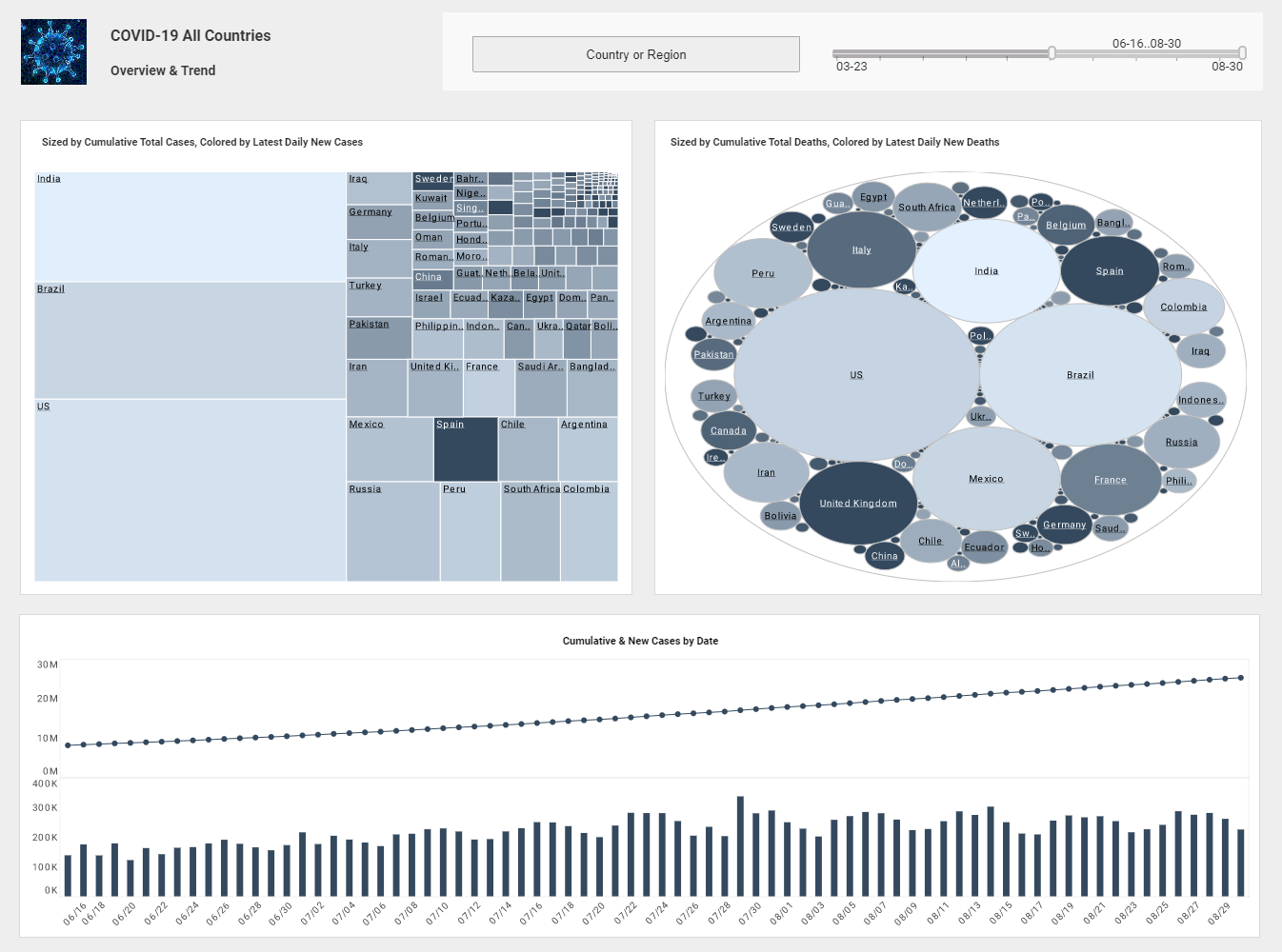InetSoft Webinar: The Movement Towards Using Unstructured Data in Business Intelligence Solutions
This is the transcript of a Webinar hosted by InetSoft on the topic of "The Movement Towards Using Unstructured Data in Business Intelligence Solutions." The speaker is Mark Flaherty, CMO at InetSoft.
In general the market for accessing information is evolving towards a more unified approach of bringing structured and non structured information together. One of the top trends is bringing the concept of search and analysis to more unstructured information by information management applications. And we categorize information management applications as those applications that bring together those various types of information into a single system.
Now that we’ve explained our definition of information management applications, let’s talk about both the platform and the tools to build these applications and how to deliver these applications. What the applications are doing is accessing and using information. And as I said before it’s accessing all types of information, not just the structured information that you are used to in enterprise databases such as CRMs or financial systems or supply chain management systems.
So if I was to distinguish it from what is commonly available in business intelligence solutions today, the vast majority of is around structured information. So the functions that we think are important in this category are: search, accessing information, inside the organization and outside, which would mean enabling enterprise to have their external audience access information. And then there is the notion of collaborating around the information, not just accessing it individually.
Let’s talk about what were our key insights coming out of this. We see a demand for these types of capabilities, and we see organizations embracing these. Mostly what we see today is that they’re separate applications, and so we see a few organizations trying to bring them together. Few have attempted to bridge this gap and done a reasonably good job, yet. I think those that have are ahead of the market with their capabilities.
How difficult is it to make unstructured information usable?
The reason why these unstructured information management applications are separate from BI applications today is because the indexing and searching unstructured information rapidly is a different challenge than searching and navigating structured information. So if you think about all the work that is found in typical BI technology to make it access data fast, the same concepts don’t necessarily apply.
The same objectives apply. But the techniques you use are different. And some vendors have come at this from the unstructured side. No one really bridge the two sides. Usually they only have the technology to search and navigate the unstructured information. But the point is, it’s already proven that it’s doable, that the systems are good, and it’s not like it’s an impossible dream to make possible.
And there appears to be demand for it, and there’s still a need to bridge the two worlds. There’s still plenty of opportunity in the market. It’s not like this market is closed and done.
Another key missing piece is the ability to then assemble applications. So if you were to be able to add some components, presentation tools that dealt with unstructured information and crossed the boundary between the two. And we talked about already bringing together the different types of information. We talked about building the applications. And presenting the information is important.
What are the key considerations for integrating unstructured data into BI?
Let’s drill into some more of the specifics. So you do see more advancement, more innovation and application of these capabilities in larger organizations. Very large organizations tend to be ahead of the curve on this, but that’s not too surprising. Most organizations are advancing but not all the way up at the innovative level. How mature are the people, how mature is the information, how mature is the technology and how mature are their processes? And when we see that any one of those things, vary significantly from this overall maturity, we break that out and share that information.
As organizations continue to adopt more advanced business intelligence solutions, the integration of unstructured data becomes increasingly critical. Unstructured data, such as emails, documents, social media posts, and multimedia files, often contains valuable insights that are not easily accessible through traditional structured data analysis. By leveraging technologies like natural language processing and machine learning, businesses can extract meaningful patterns and trends from these diverse data sources, enhancing their decision-making capabilities.
However, the process of integrating unstructured data into existing BI platforms presents several challenges. Data quality and consistency must be addressed, as unstructured data can be messy and difficult to standardize. Additionally, organizations need to invest in scalable storage and processing solutions to handle the large volumes of information generated daily. Security and privacy concerns also arise, especially when dealing with sensitive or proprietary content, requiring robust governance frameworks.
Looking ahead, the future of business intelligence lies in the seamless fusion of structured and unstructured data. As tools and platforms evolve, we can expect more intuitive interfaces and automated workflows that simplify the analysis of complex information. Organizations that embrace these innovations will be better positioned to uncover hidden opportunities, respond to market changes more rapidly, and maintain a competitive edge in an increasingly data-driven world.


